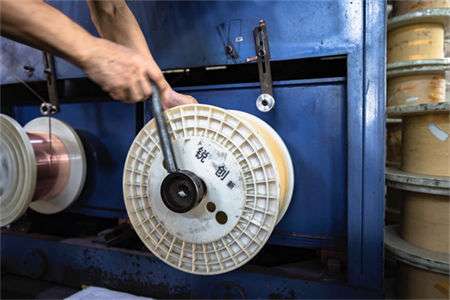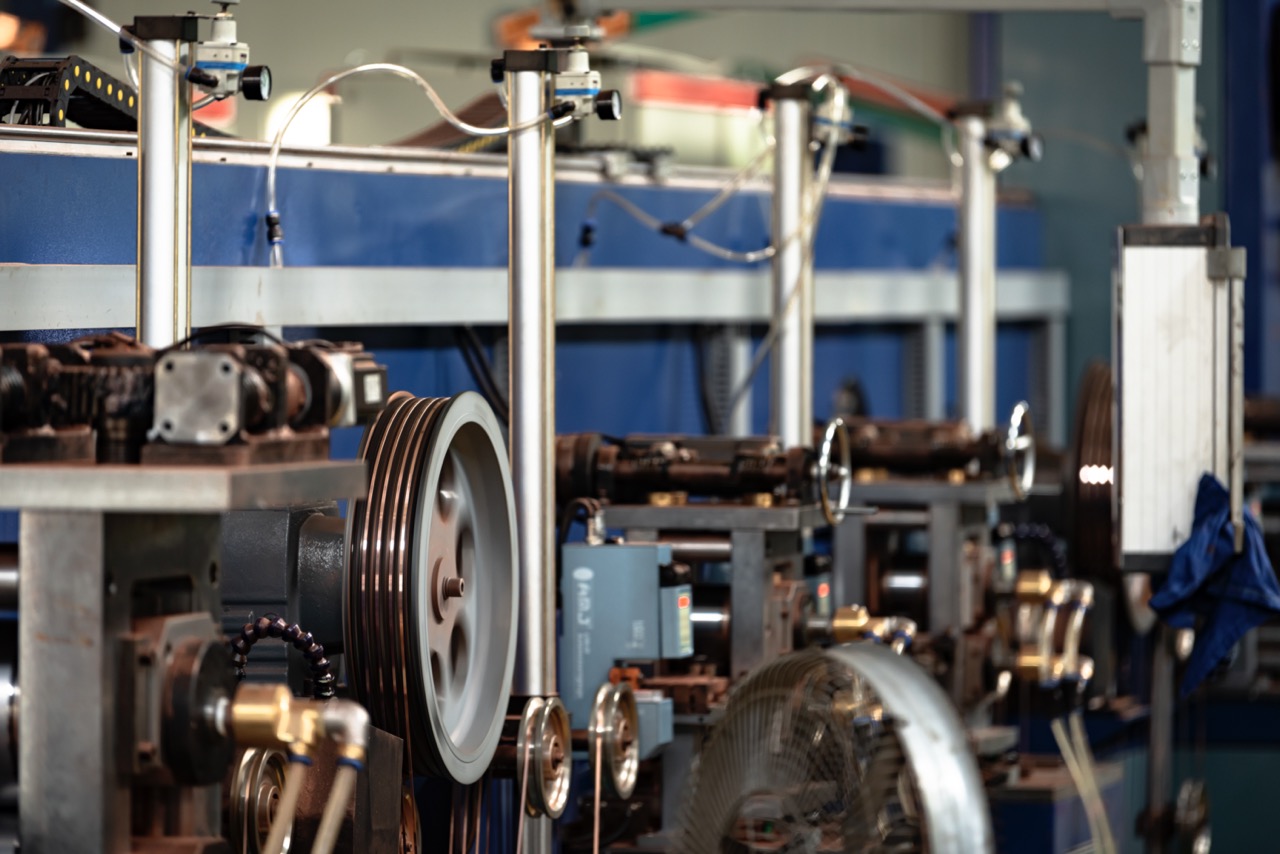The production process of copper-clad aluminum wire involves a variety of technical requirements and technical difficulties, mainly including metal smelting, surface treatment, coating technology, drawing and forming, etc. The following are some of the main technical requirements and production difficulties:
1. Metallurgical bonding of aluminum core and copper layer
- Technical requirements: The key to copper-clad aluminum wire is the metallurgical bonding between the aluminum core and the copper layer, that is, the copper layer and the aluminum core must form a strong atomic bond, rather than a simple physical coating. Only when the two metals form a good bond can the conductivity, strength and durability of the copper-clad aluminum wire be ensured.
- Technical Difficulties: The melting points of aluminum and copper are quite different, and an oxide film easily forms on the surface of aluminum, which hinders the bonding of the copper layer to the aluminum. In order to achieve an ideal metallurgical bond, the temperature, pressure and time need to be precisely controlled to ensure that the copper layer forms a uniform and strong bond on the aluminum surface.
- Workaround: Use a suitable coating process (such as "dipping" process or "calendering" process) and an optimized annealing method to remove the oxide layer on the aluminum surface so that the copper layer forms a strong bond with the aluminum.
2. Control of copper layer thickness of copper clad aluminum wire
- Technical requirements: The copper layer thickness of copper clad aluminum wire must be uniform and stable. Too thin a copper layer will result in poor conductivity and easy damage; too thick a copper layer may increase manufacturing costs and weight, and may also affect the flexibility of the conductor.
- Technical Difficulties: During the production process, precise control of the copper layer thickness is a challenge, especially during the continuous cladding and drawing process, the stretching, compression and cooling rates of the copper layer may be inconsistent, resulting in an uneven copper layer and affecting the quality of the final product.
- Workaround: Use high-precision drawing equipment and control systems to optimize the production process to ensure that the thickness of the copper layer is uniform and meets the standards. In addition, annealing and other treatment methods are used to make the bond between the copper layer and the aluminum core stronger and improve the uniformity of the copper layer.
3. Surface treatment of copper clad aluminum wire
- Technical requirements: The surface of copper clad aluminum wire must be smooth, free of oxides and impurities to ensure good electrical performance. Oxides on the surface of the copper layer will increase the contact resistance and affect the conductive performance.
- Technical Difficulties: The copper surface is easily oxidized, and the oxide layer on the aluminum surface is also very stubborn. Effective measures must be taken to remove the oxide layer and prevent re-oxidation. The degree of surface cleanliness directly affects the electrical properties of copper-clad aluminum wire.
- Workaround: Before the production of copper-clad aluminum wire, the aluminum core needs to be chemically cleaned or mechanically cleaned (such as pickling, sandblasting, etc.) to remove the oxide film on the aluminum surface. On the copper layer of the copper-clad aluminum wire, chemical annealing or tinning is used to prevent the copper layer from oxidizing. The entire production process should be carried out in a low-oxygen environment to avoid oxidation.
4. Annealing technology
- Technical requirementsAnnealing is an important step in the production of copper-clad aluminum wire. Annealing can improve the flexibility of the wire, reduce internal stress and avoid breakage. At the same time, annealing can also improve the metallurgical bonding of copper and aluminum.
- Technical Difficulties: Due to the large difference in melting points between copper and aluminum, the temperature, atmosphere and time need to be precisely controlled during annealing. If the annealing temperature is too high, it will cause oxidation of copper and aluminum, while if it is too low, the internal stress may not be removed, affecting the flexibility and strength of the wire.
- Workaround: Use automated temperature control equipment to ensure uniformity and accuracy of the annealing process and avoid annealing temperatures that are too high or too low. In addition, inert gases (such as nitrogen) can be used during the annealing process to prevent oxidation.

5. Drawing technology
- Technical requirements: The drawing process determines the final size, shape and mechanical properties of the copper clad aluminum wire. During the drawing process, the diameter of the copper clad aluminum wire must be precisely controlled while avoiding defects such as breakage and scratches.
- Technical Difficulties: The copper clad aluminum wire is prone to "copper peeling" during the drawing process, that is, the bond between the copper layer and the aluminum core is not strong, resulting in the copper layer falling off or partial fracture. In addition, factors such as temperature, tension, and lubrication during the drawing process may affect the quality of the copper clad aluminum wire.
- Workaround: Optimize the drawing process, accurately control the drawing speed, tension and cooling process. Use special lubricants to reduce friction and temperature fluctuations, and ensure the uniformity and mechanical properties of copper clad aluminum wire.
6. Alloying treatment
- Technical requirements: In order to enhance the mechanical and electrical properties of copper clad aluminum wire, copper or aluminum is sometimes required to be alloyed. Alloying helps to improve the strength, corrosion resistance and conductivity of the material.
- Technical Difficulties: The alloying technology of copper and aluminum is relatively complicated, especially in the production process of copper-clad aluminum wire. How to carry out effective alloying treatment without affecting the metallurgical bonding of copper-clad aluminum wire is a technical difficulty.
- Workaround: Using advanced alloying technology, such as surface alloying, coating alloying, etc., to ensure that the alloying of copper clad aluminum wire is uniform and does not affect the performance of raw materials.
7. Anti-oxidation and anti-corrosion treatment
- Technical requirements: Copper clad aluminum wire may be oxidized and corroded during production and use, especially when the copper layer is exposed to the air. Anti-oxidation and anti-corrosion are important measures to ensure the quality of copper clad aluminum wire.
- Technical Difficulties: The anti-oxidation technology of copper-clad aluminum wire needs to ensure that the copper layer surface will not be oxidized while maintaining good electrical properties. In addition, how to prevent the corrosion of the aluminum core, especially in an environment with high humidity, is also a major challenge.
- Workaround: Prevent oxidation of copper-clad aluminum wire by using coatings (such as tin plating, silver plating, anti-corrosion oil, etc.) during the production process, and use dry atmosphere or inert gas to protect the copper layer. When storing, use moisture-proof and anti-oxidation packaging materials to keep the copper-clad aluminum wire dry.
8. Optimization of coating process
- Technical requirements: The coating process determines the forming quality and coating effect of copper-clad aluminum wire, requiring that the combination of copper layer and aluminum core should be uniform and dense, and the thickness of copper layer should meet the standard.
- Technical Difficulties: One of the technical difficulties is the control of temperature and pressure during the coating process. If the coating temperature is too high, it may cause oxidation of copper and aluminum materials; if the coating pressure is not enough, the bond between the copper layer and the aluminum core may not be strong.
- Workaround: Use advanced coating equipment (such as bimetallic extruder, calender, etc.) to accurately control temperature, pressure and time to ensure uniform and efficient coating process.
Summarize
The technical requirements and difficulties of copper-clad aluminum wire production are mainly concentrated in metal metallurgical bonding, copper layer thickness control, surface treatment, annealing, drawing and forming, etc. To solve these technical difficulties, in addition to relying on advanced equipment and automatic control technology, it is also necessary to optimize the process flow and strictly control each production link to ensure the quality and stability of the final product. Breakthroughs and continuous improvements in these technical difficulties are the key to the development of the copper-clad aluminum wire industry.
